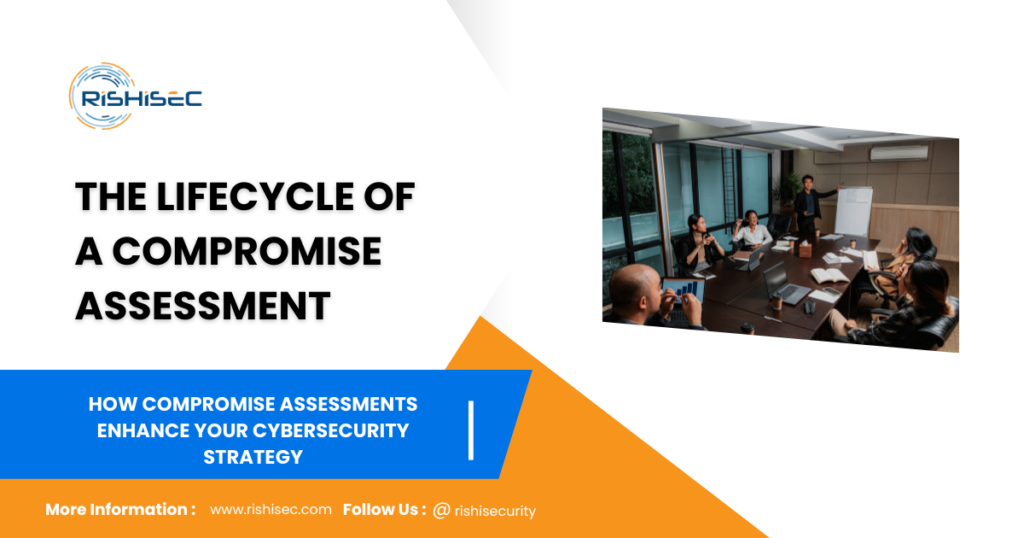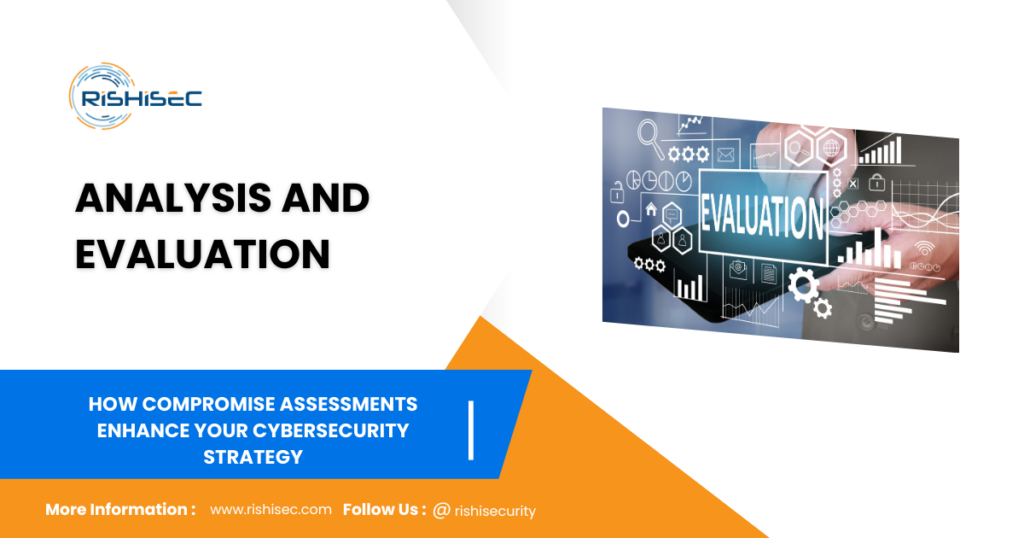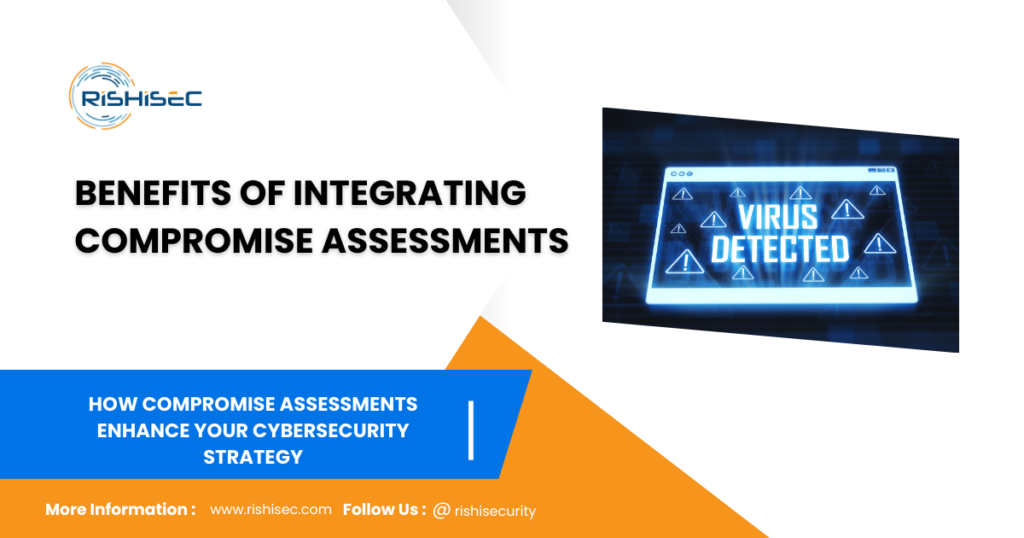Contents
How Compromise Assessments Enhance Your Cyber security Strategy
In today’s dynamic digital environment, safeguarding your organization’s assets against ever-evolving threats is more crucial than ever. How compromise assessments enhance your cyber security Strategy becomes clear when you consider that one of the most effective ways to bolster your security posture is through comprehensive compromise assessments. This guide will delve into the life cycle of these assessments, offering a detailed exploration of each phase, the benefits they provide, and how they integrate into your overall cyber security strategy. By understanding and implementing these assessments, organizations can not only enhance their defense mechanisms but also better manage potential risks.
The Lifecycle of a Compromise Assessment

1. Preparation and Planning
Before embarking on a compromise assessment, it’s essential to establish clear objectives and scope. This phase involves:
- Defining Assessment Goals: Identify specific security concerns and objectives. Are you focusing on detecting internal threats, external breaches, or both?
- Scoping the Assessment: Determine the boundaries of the assessment, including the systems, networks, and data that will be examined. Tailor the scope to align with your organization’s unique threat landscape and regulatory requirements.
- Assembling the Team: Gather a team of experts who understand the technical and strategic aspects of compromise assessments. Their expertise will guide the planning and execution phases effectively.
2. Discovery and Data Collection
Effective compromise assessments begin with thorough discovery and data collection:
- Gathering Data: Utilize advanced tools and techniques to collect comprehensive data from various sources, including network traffic, system logs, and endpoint activities. This data provides a foundation for identifying anomalies and potential threats.
- Ensuring Coverage: Ensure that all critical areas are covered, including cloud environments, internal networks, and remote endpoints. Incomplete data collection can lead to undetected vulnerabilities.
- Maintaining Data Integrity: Implement measures to ensure the accuracy and integrity of collected data. Any discrepancies can lead to false positives or missed threats.
3. Analysis and Evaluation

Once data is collected, the next step is to analyze and evaluate:
- Detecting Indicators of Compromise (IoCs): Analyze the data to identify signs of compromise, such as unusual network traffic patterns, unauthorized access attempts, or malicious code.
- Assessing Impact: Evaluate the severity of detected threats and their potential impact on the organization. This involves understanding how a breach could affect operations, data integrity, and compliance.
- Prioritizing Risks: Rank identified threats based on their potential impact and likelihood. This helps in focusing remediation efforts on the most critical issues.
4. Reporting and Recommendations
A detailed and actionable report is crucial for effective remediation. It demonstrates how compromise assessments enhance your cyber security strategy by providing clear insights into identified vulnerabilities, recommended fixes, and prioritized actions. With this information in hand, organizations can take targeted steps to mitigate risks, strengthen their security posture, and prevent future attacks.
- Documenting Findings: Prepare a comprehensive report that details the findings from the assessment. Include information on detected threats, vulnerabilities, and any evidence collected.
- Providing Recommendations: Offer actionable recommendations for addressing identified vulnerabilities and improving the overall security posture. Ensure that these recommendations are practical and tailored to the organization’s specific needs.
- Facilitating Communication: Present the report in a manner that is understandable to both technical and non-technical stakeholders. Clear communication ensures that everyone involved understands the risks and proposed actions.
5. Remediation and Follow-up
The final phase involves implementing corrective measures and ensuring continuous improvement:
- Implementing Solutions: Act on the recommendations provided in the assessment report. This may involve deploying security patches, updating configurations, or enhancing security policies.
- Verifying Effectiveness: Conduct follow-up assessments to verify that implemented measures effectively address the identified vulnerabilities. Continuous monitoring and reassessment are key to maintaining a robust security posture.
- Updating Strategies: Regularly update your compromise assessment strategies to adapt to new threats and evolving technologies. Stay informed about the latest security trends and best practices.
Benefits of Integrating Compromise Assessments

- Enhanced Threat Detection: Compromise assessments provide a deeper understanding of potential threats that traditional methods might overlook. By identifying hidden threats, organizations can take proactive measures to mitigate risks.
- Proactive Risk Management: Addressing vulnerabilities before they are exploited helps in minimizing the impact of potential breaches. This proactive approach reduces the likelihood of successful attacks and enhances overall security.
- Regulatory Compliance: Many industries have strict regulatory requirements regarding data protection and security. Compromise assessments help ensure that your organization remains compliant with these regulations, avoiding potential legal and financial penalties.
- Improved Incident Response: Insights gained from compromise assessments contribute to the development of more effective incident response plans. By understanding potential attack vectors and vulnerabilities, organizations can prepare more robust responses to security incidents.
Case Study: Real-World Application
Consider a financial institution that recently integrated compromise assessments into its cyber security strategy. This example highlights How compromise assessments enhance your cyber security strategy by uncovering several critical vulnerabilities within their network infrastructure that were previously unknown. As a result, the institution not only strengthened its security posture but also achieved compliance with industry regulations, thus avoiding potential fines and enhancing customer trust.
CTA
Elevate your cybersecurity strategy with the power of advanced compromise assessments. Start your free trial of SentryCA today and discover how our state-of-the-art tools can transform your approach to threat detection and risk management. With SentryCA, you’ll benefit from comprehensive assessments, actionable insights, and unparalleled support, ensuring your organization remains secure against evolving threats. Don’t wait—fortify your defenses and stay ahead of potential risks with SentryCA!
Conclusion
Compromise assessments are a vital component of a comprehensive cybersecurity strategy. By understanding and effectively implementing these assessments, organizations can enhance their ability to detect and respond to threats, manage risks proactively, and ensure compliance with regulatory requirements. Integrate compromise assessments into your security strategy today and experience the benefits of a more resilient and secure organization.
Continue reading our this post, The Importance of Compromise Assessments in Regulatory Compliance


